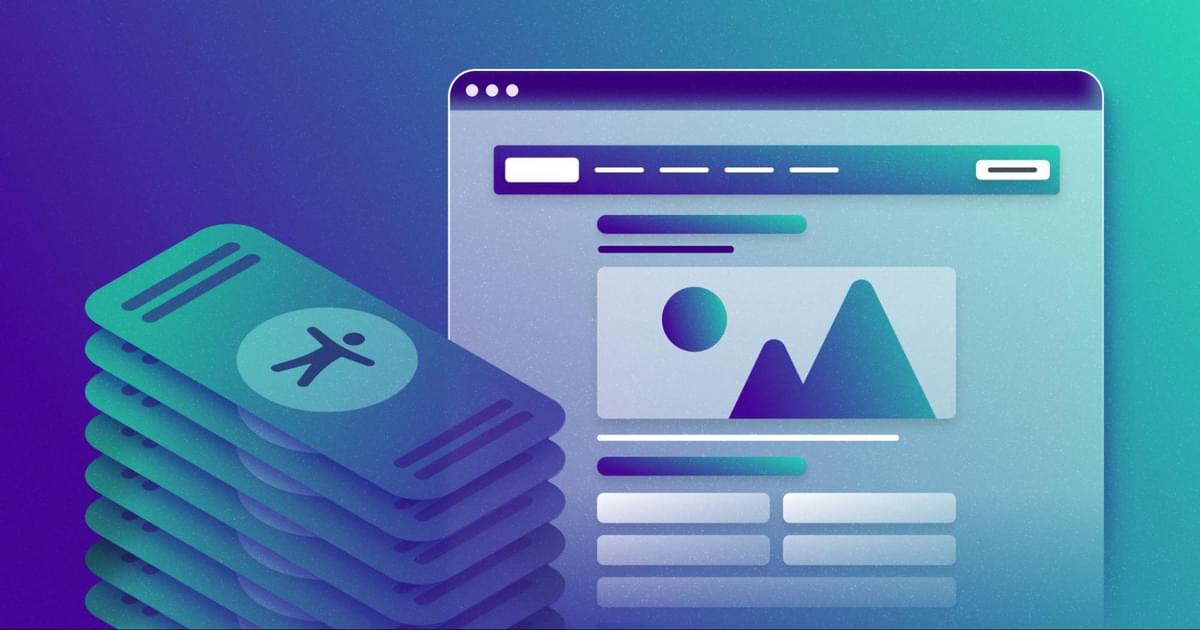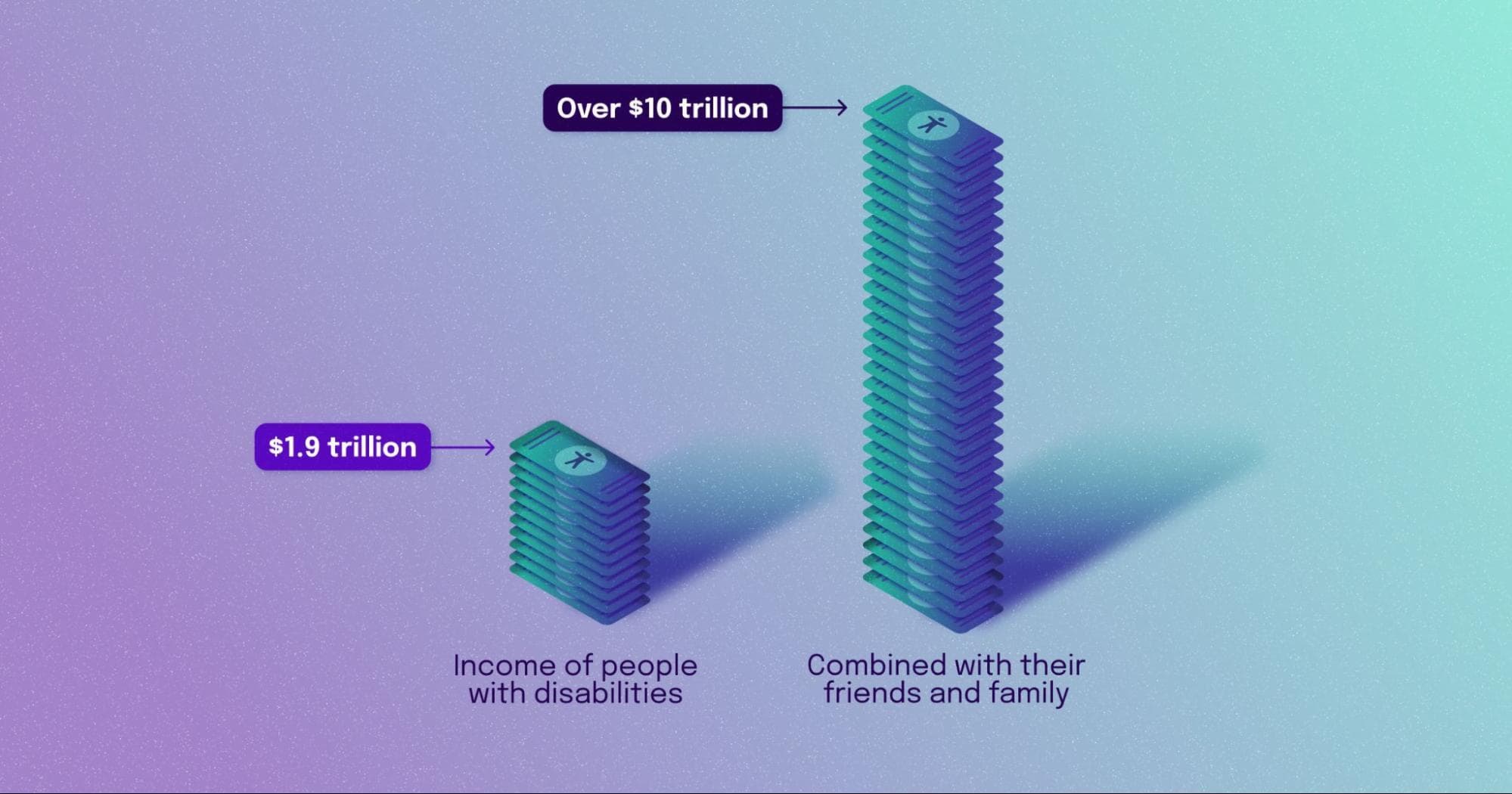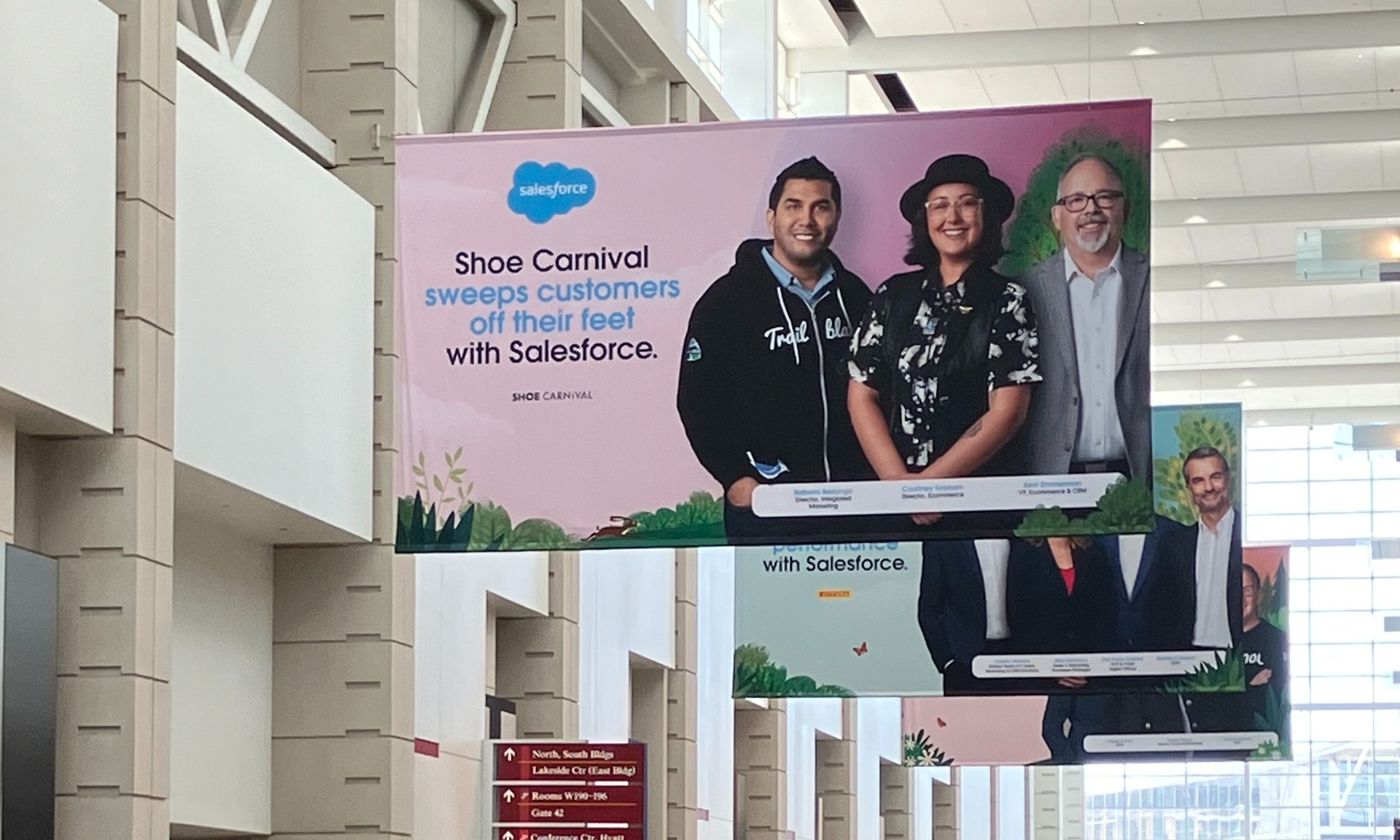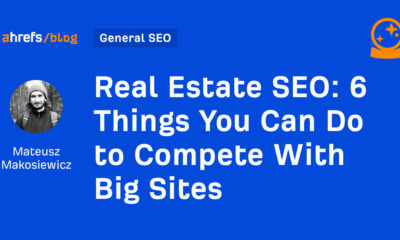MARKETING
The ROI of Digital Accessibility

The author’s views are entirely his or her own (excluding the unlikely event of hypnosis) and may not always reflect the views of Moz.
In a recent AudioEye survey of 500 business leaders and web professionals, 70% said that “cost” was their main concern when it came to digital accessibility. Many of the respondents also thought they would have to rebuild their website from the ground up in order to deliver an accessible browsing experience.
This perception of digital accessibility as a cost center without an easy remedy is one of the reasons that just 3% of the internet is accessible to people with disabilities, despite the 1.3 billion people globally who live with a disability.
In this post, I discuss three benefits of digital accessibility — and hopefully, make a case for why inclusion isn’t just the right thing to do, but a huge business opportunity.
Three reasons to prioritize digital accessibility
Many business leaders are aware of the risk of non-compliance with the Americans with Disabilities Act (ADA) and other accessibility legislation. Over the last few years, there has been a record number of digital accessibility lawsuits. More companies are receiving demand letters or being taken to court over alleged violations under the ADA. And when that happens, other business leaders pay attention.
What business leaders don’t always consider is the opportunity that digital accessibility represents, whether it’s reaching more potential customers, building a more inclusive organization, or improving the browsing experience for all users — not to mention search engines and voice assistants.
1. Digital accessibility is not an edge case

One of the biggest misconceptions about digital accessibility is that it’s some sort of edge case. In fact, people with disabilities are the largest minority in the United States.
In the United States, one in four adults lives with some type of disability. That number goes even higher when you include temporary disabilities, like broken limbs or short-term impairments following surgery or medical treatments.
According to the Global Economics of Disability 2020 report, people with disabilities control $1.9 trillion in disposable income, globally. That number reaches over $10 trillion when their friends and family are included.
By designing for accessibility, you can make your website and digital experiences work better for everyone.
2. Accessible design is good for everyone
At its core, digital accessibility is all about eliminating barriers that can prevent people from browsing your website.
By following the best practices of accessible design, you can help ensure that everyone can interact with your digital content — regardless of age, disability, or any other factor.
For example, the World Wide Web Consortium’s (W3C) Supplemental Guidance to WCAG 2 includes best practices for clear and understandable content, such as:
-
Avoiding double negatives, such as “Time is not unlimited.”
-
Using short sentences with one point per sentence.
-
Putting the key takeaway or objective at the start of a paragraph.
-
When possible, using bulleted or numbered lists.
The goal of these recommendations is to remove confusion for people with dyslexia and other learning disabilities. But it could just as easily be a general writing best practice.
Every user can benefit from simple, direct language that removes friction and gives them a clear next step. It’s the foundation of any conversion-optimized website — and it just happens to overlap with the best practices of accessible design.
3. Digital accessibility supports discoverability
There’s also a clear overlap between accessibility and discoverability. For example, sites with clear, descriptive headings — the same kinds of headings that make navigation and comprehension easier for people with disabilities — are also easier for search engines like Google to crawl.
Because of this, there’s strong evidence that Google rewards accessibility when ranking websites. In fact, its Webmaster Guidelines — which outline the best practices that help Google to find, index, and rank your site — read like accessibility guidelines — and often correlate directly with WCAG.
Accessible websites are also beneficial to users who access websites with voice search. According to the Google Mobile Voice Study, 41% of US adults and 55% of teens use voice search daily. Businesses with websites that are optimized for voice search, have a better chance of being discovered and used by potential customers.
Making the business case for digital accessibility

The first goal of any digital accessibility initiative should be to deliver an inclusive experience to everyone who visits your website. Not only is it the right thing to do, but it can help you reach a market that’s traditionally been underserved.
However, it’s important to note the other benefit of building an accessible website: greater conformance with accessibility standards like the Web Content Accessibility Guidelines (WCAG), which are used to assess a site’s compliance with the ADA.
Based on recent guidance from the Department of Justice, it’s clear that businesses of all sizes are expected to meet accessibility standards like WCAG in order to comply with the ADA.
When you calculate the ROI of digital accessibility, you should factor in that the cost of defending a digital accessibility lawsuit — or even settling a demand letter — can often surpass the cost of making your website accessible.
By taking a more proactive approach to digital accessibility, you can comply with the law while also turning a requirement into an opportunity to grow your business and deliver an inclusive experience to every customer.
As you invest in digital accessibility, it’s worth measuring your progress over time. To get started, you can use a free accessibility checker to assess your website’s accessibility — and then see how it improves as you implement accessibility best practices.
MARKETING
YouTube Ad Specs, Sizes, and Examples [2024 Update]
![YouTube Ad Specs, Sizes, and Examples [2024 Update] YouTube Ad Specs, Sizes, and Examples](https://articles.entireweb.com/wp-content/uploads/2024/06/YouTube-Ad-Specs-Sizes-and-Examples.jpg)
Introduction
With billions of users each month, YouTube is the world’s second largest search engine and top website for video content. This makes it a great place for advertising. To succeed, advertisers need to follow the correct YouTube ad specifications. These rules help your ad reach more viewers, increasing the chance of gaining new customers and boosting brand awareness.
Types of YouTube Ads
Video Ads
- Description: These play before, during, or after a YouTube video on computers or mobile devices.
- Types:
- In-stream ads: Can be skippable or non-skippable.
- Bumper ads: Non-skippable, short ads that play before, during, or after a video.
Display Ads
- Description: These appear in different spots on YouTube and usually use text or static images.
- Note: YouTube does not support display image ads directly on its app, but these can be targeted to YouTube.com through Google Display Network (GDN).
Companion Banners
- Description: Appears to the right of the YouTube player on desktop.
- Requirement: Must be purchased alongside In-stream ads, Bumper ads, or In-feed ads.
In-feed Ads
- Description: Resemble videos with images, headlines, and text. They link to a public or unlisted YouTube video.
Outstream Ads
- Description: Mobile-only video ads that play outside of YouTube, on websites and apps within the Google video partner network.
Masthead Ads
- Description: Premium, high-visibility banner ads displayed at the top of the YouTube homepage for both desktop and mobile users.
YouTube Ad Specs by Type
Skippable In-stream Video Ads
- Placement: Before, during, or after a YouTube video.
- Resolution:
- Horizontal: 1920 x 1080px
- Vertical: 1080 x 1920px
- Square: 1080 x 1080px
- Aspect Ratio:
- Horizontal: 16:9
- Vertical: 9:16
- Square: 1:1
- Length:
- Awareness: 15-20 seconds
- Consideration: 2-3 minutes
- Action: 15-20 seconds
Non-skippable In-stream Video Ads
- Description: Must be watched completely before the main video.
- Length: 15 seconds (or 20 seconds in certain markets).
- Resolution:
- Horizontal: 1920 x 1080px
- Vertical: 1080 x 1920px
- Square: 1080 x 1080px
- Aspect Ratio:
- Horizontal: 16:9
- Vertical: 9:16
- Square: 1:1
Bumper Ads
- Length: Maximum 6 seconds.
- File Format: MP4, Quicktime, AVI, ASF, Windows Media, or MPEG.
- Resolution:
- Horizontal: 640 x 360px
- Vertical: 480 x 360px
In-feed Ads
- Description: Show alongside YouTube content, like search results or the Home feed.
- Resolution:
- Horizontal: 1920 x 1080px
- Vertical: 1080 x 1920px
- Square: 1080 x 1080px
- Aspect Ratio:
- Horizontal: 16:9
- Square: 1:1
- Length:
- Awareness: 15-20 seconds
- Consideration: 2-3 minutes
- Headline/Description:
- Headline: Up to 2 lines, 40 characters per line
- Description: Up to 2 lines, 35 characters per line
Display Ads
- Description: Static images or animated media that appear on YouTube next to video suggestions, in search results, or on the homepage.
- Image Size: 300×60 pixels.
- File Type: GIF, JPG, PNG.
- File Size: Max 150KB.
- Max Animation Length: 30 seconds.
Outstream Ads
- Description: Mobile-only video ads that appear on websites and apps within the Google video partner network, not on YouTube itself.
- Logo Specs:
- Square: 1:1 (200 x 200px).
- File Type: JPG, GIF, PNG.
- Max Size: 200KB.
Masthead Ads
- Description: High-visibility ads at the top of the YouTube homepage.
- Resolution: 1920 x 1080 or higher.
- File Type: JPG or PNG (without transparency).
Conclusion
YouTube offers a variety of ad formats to reach audiences effectively in 2024. Whether you want to build brand awareness, drive conversions, or target specific demographics, YouTube provides a dynamic platform for your advertising needs. Always follow Google’s advertising policies and the technical ad specs to ensure your ads perform their best. Ready to start using YouTube ads? Contact us today to get started!
MARKETING
Why We Are Always ‘Clicking to Buy’, According to Psychologists

Amazon pillows.
MARKETING
A deeper dive into data, personalization and Copilots

Salesforce launched a collection of new, generative AI-related products at Connections in Chicago this week. They included new Einstein Copilots for marketers and merchants and Einstein Personalization.
To better understand, not only the potential impact of the new products, but the evolving Salesforce architecture, we sat down with Bobby Jania, CMO, Marketing Cloud.
Dig deeper: Salesforce piles on the Einstein Copilots
Salesforce’s evolving architecture
It’s hard to deny that Salesforce likes coming up with new names for platforms and products (what happened to Customer 360?) and this can sometimes make the observer wonder if something is brand new, or old but with a brand new name. In particular, what exactly is Einstein 1 and how is it related to Salesforce Data Cloud?
“Data Cloud is built on the Einstein 1 platform,” Jania explained. “The Einstein 1 platform is our entire Salesforce platform and that includes products like Sales Cloud, Service Cloud — that it includes the original idea of Salesforce not just being in the cloud, but being multi-tenancy.”
Data Cloud — not an acquisition, of course — was built natively on that platform. It was the first product built on Hyperforce, Salesforce’s new cloud infrastructure architecture. “Since Data Cloud was on what we now call the Einstein 1 platform from Day One, it has always natively connected to, and been able to read anything in Sales Cloud, Service Cloud [and so on]. On top of that, we can now bring in, not only structured but unstructured data.”
That’s a significant progression from the position, several years ago, when Salesforce had stitched together a platform around various acquisitions (ExactTarget, for example) that didn’t necessarily talk to each other.
“At times, what we would do is have a kind of behind-the-scenes flow where data from one product could be moved into another product,” said Jania, “but in many of those cases the data would then be in both, whereas now the data is in Data Cloud. Tableau will run natively off Data Cloud; Commerce Cloud, Service Cloud, Marketing Cloud — they’re all going to the same operational customer profile.” They’re not copying the data from Data Cloud, Jania confirmed.
Another thing to know is tit’s possible for Salesforce customers to import their own datasets into Data Cloud. “We wanted to create a federated data model,” said Jania. “If you’re using Snowflake, for example, we more or less virtually sit on your data lake. The value we add is that we will look at all your data and help you form these operational customer profiles.”
Let’s learn more about Einstein Copilot
“Copilot means that I have an assistant with me in the tool where I need to be working that contextually knows what I am trying to do and helps me at every step of the process,” Jania said.
For marketers, this might begin with a campaign brief developed with Copilot’s assistance, the identification of an audience based on the brief, and then the development of email or other content. “What’s really cool is the idea of Einstein Studio where our customers will create actions [for Copilot] that we hadn’t even thought about.”
Here’s a key insight (back to nomenclature). We reported on Copilot for markets, Copilot for merchants, Copilot for shoppers. It turns out, however, that there is just one Copilot, Einstein Copilot, and these are use cases. “There’s just one Copilot, we just add these for a little clarity; we’re going to talk about marketing use cases, about shoppers’ use cases. These are actions for the marketing use cases we built out of the box; you can build your own.”
It’s surely going to take a little time for marketers to learn to work easily with Copilot. “There’s always time for adoption,” Jania agreed. “What is directly connected with this is, this is my ninth Connections and this one has the most hands-on training that I’ve seen since 2014 — and a lot of that is getting people using Data Cloud, using these tools rather than just being given a demo.”
What’s new about Einstein Personalization
Salesforce Einstein has been around since 2016 and many of the use cases seem to have involved personalization in various forms. What’s new?
“Einstein Personalization is a real-time decision engine and it’s going to choose next-best-action, next-best-offer. What is new is that it’s a service now that runs natively on top of Data Cloud.” A lot of real-time decision engines need their own set of data that might actually be a subset of data. “Einstein Personalization is going to look holistically at a customer and recommend a next-best-action that could be natively surfaced in Service Cloud, Sales Cloud or Marketing Cloud.”
Finally, trust
One feature of the presentations at Connections was the reassurance that, although public LLMs like ChatGPT could be selected for application to customer data, none of that data would be retained by the LLMs. Is this just a matter of written agreements? No, not just that, said Jania.
“In the Einstein Trust Layer, all of the data, when it connects to an LLM, runs through our gateway. If there was a prompt that had personally identifiable information — a credit card number, an email address — at a mimum, all that is stripped out. The LLMs do not store the output; we store the output for auditing back in Salesforce. Any output that comes back through our gateway is logged in our system; it runs through a toxicity model; and only at the end do we put PII data back into the answer. There are real pieces beyond a handshake that this data is safe.”
-

 WORDPRESS3 days ago
WORDPRESS3 days agoWordPress biz Automattic details WP Engine deal demands • The Register
-
SEARCHENGINES5 days ago
Daily Search Forum Recap: September 30, 2024
-

 SEARCHENGINES6 days ago
SEARCHENGINES6 days agoGoogle Volatility With Gains & Losses, Updated Web Spam Policies, Cache Gone & More Search News
-

 SEO7 days ago
SEO7 days ago6 Things You Can Do to Compete With Big Sites
-
SEARCHENGINES4 days ago
Daily Search Forum Recap: October 1, 2024
-

 SEO6 days ago
SEO6 days agoAn In-Depth Guide For Businesses
-

 AFFILIATE MARKETING6 days ago
AFFILIATE MARKETING6 days agoThis Minimalist Lamp Lets You Pick From 16 Million+ Lighting Colors for Maximum Productivity
-

 AFFILIATE MARKETING6 days ago
AFFILIATE MARKETING6 days agoNvidia CEO Jensen Huang Praises Nuclear Energy to Power AI














